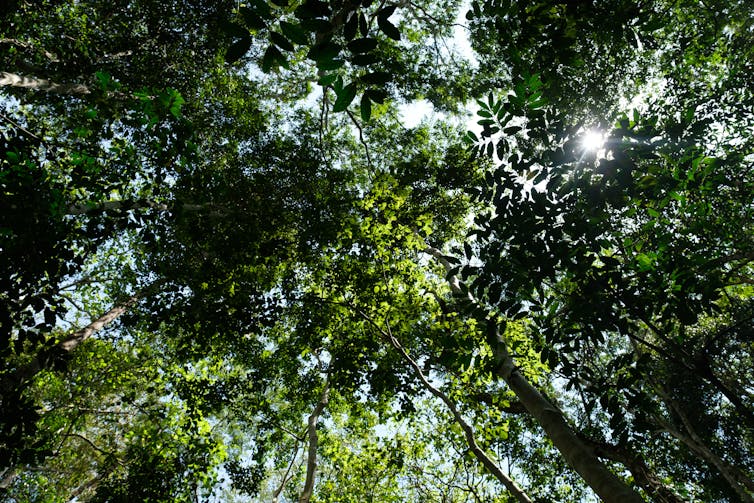Africa now emits as much carbon as it stores: landmark new study
Africa now emits as much carbon as it stores: landmark new study The Conversation Africa


Africa’s Carbon Emissions Exceed Carbon Storage, According to Landmark Study
A landmark new study has found that, in the last decade, the African continent has started emitting more carbon than it stores. When the total amount of carbon that is sequestered by natural ecosystems (such as the soil and plants in grasslands, savannas, and forests) exceeds the amount of total carbon emissions within a system, it’s referred to as a net sink of carbon. But, the study found, as natural ecosystems are converted for agricultural purposes, the carbon storage capacity is decreasing – while the rate of emissions is increasing.
Yolandi Ernst of the University of the Witwatersrand (Wits) in South Africa led the international research team that calculated the flows of carbon dioxide, methane, and nitrous oxide through Africa’s terrestrial and aquatic ecosystems. She and one of the study co-authors, Sally Archibald – also from Wits and the lead of the Future Ecosystems for Africa Programme – unpacked their findings for The Conversation Africa.
What did you set out to calculate, how did you do it, and why?
We wanted to know both the amount of greenhouse gases being produced by the African continent and the amount being taken up. This helped us to develop a greenhouse gas budget, quantifying the net amount of outgoing and incoming greenhouse gases. In this way, we’re better able to understand how the continent is contributing to global climate change (by releasing greenhouse gases) and how, through taking up greenhouse gases, it’s helping to mitigate global climate change.
This study formed part of a global effort by the Regional Carbon Cycle Assessment and Processes Phase 2 (RECCAP2) project. It aims to establish improved greenhouse gas budgets for large regions covering the entire globe at the scale of continents (or large countries) and large ocean basins.
We collated data from a variety of sources and created models to calculate the amount of carbon dioxide, methane, and nitrous oxide (collectively called greenhouse gases) being released into the atmosphere from several different sources. Some are human sources, like agriculture and fossil fuel emissions. Other sources, like wildfires and termites, are natural.
Then we calculated the amount of carbon that’s drawn down from the atmosphere and stored in what are called carbon sinks: the soils and plants in grassland, savanna, and forest ecosystems.
The net budget estimate was the result of adding all the sources and sinks, just like balancing a household budget, where you don’t want to be spending more than you are earning.
This information is crucial for policy making. If scientists, land managers, and NGOs know which activities produce the most greenhouse gases they can work with governments and policymakers to minimize this. And knowing which parts of Africa best help to store carbon means funding and policy efforts can be directed to protecting and increasing this carbon “land sink”.
What are the biggest sources of carbon emissions on the African continent?
It’s important to distinguish between anthropogenic and natural emissions here. Fossil fuel burning and agriculture are the biggest sources of carbon emissions; both are anthropogenic (caused by humans). Other emissions are part of the ecosystem functioning but they can also be affected by human activities. Examples include fire, methane emissions from herbivores, and inland and coastal water bodies. These all represent quite large emissions, but they’re only somewhat affected by human activities.
In Africa’s case, our budget shows that when people transform natural landscapes for agricultural and other purposes, the emissions from fire decrease, but emissions from herbivores increase.
There are also some important natural processes that draw carbon and greenhouse gases back into the land surface. These include the growth of vegetation and soil carbon storage, as well as weathering of rocks (which turns atmospheric CO₂ into carbonate minerals), and burial of carbon in the ocean.
The previous African carbon budget (1985-2009) showed the processes drawing carbon into Africa were higher than the natural emissions and the anthropogenic emissions. The continent was a carbon sink even though it emitted some anthropogenic greenhouse gases: Africa was providing a climate service to the globe.
Globally the anthropogenic emissions of CO₂ are 11.21 gigatons of carbon per year (GtC/yr), but the land takes up about 3.5 GtC/year, so it is helping to slow the growth rate. The African land sink is about 0.8 GtC, representing about 20% of the world’s total land sink.
Join us, as fellow seekers of change, on a transformative journey at https://sdgtalks.ai/welcome, where you can become a member and actively contribute to shaping a brighter future.
 theconversation.com
theconversation.com








